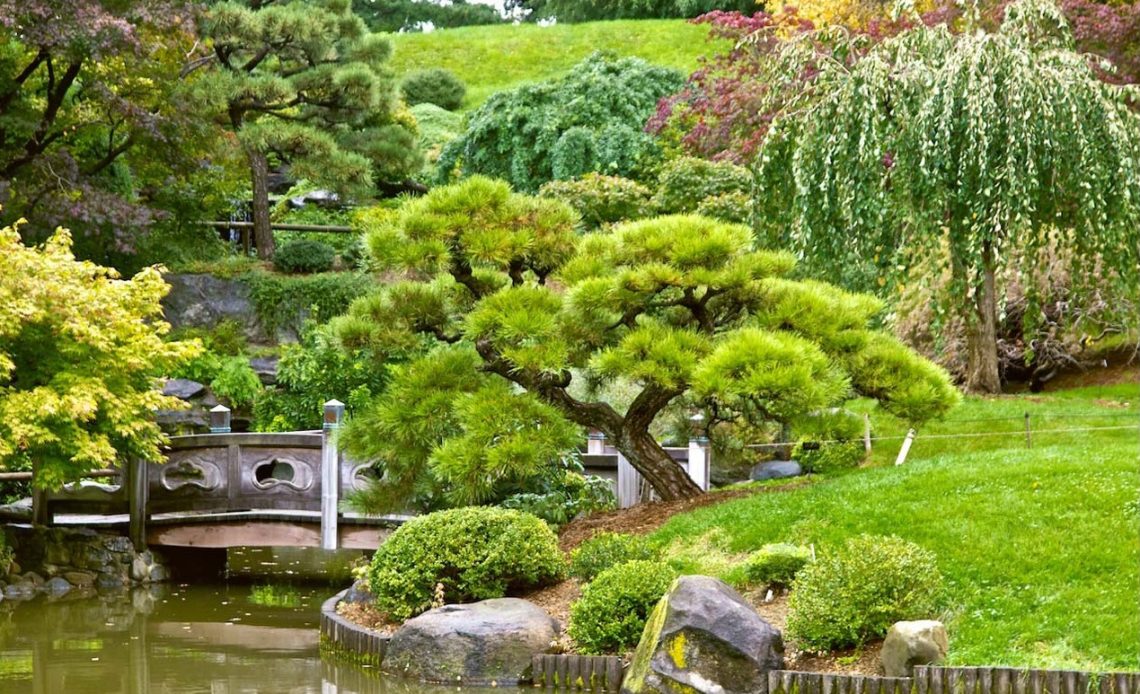

We’re here to help! Wild Yards is a completely free website that is 100% dedicated to helping you create a wildlife-friendly, sustainable yard. Read more
WildYards is reader-supported. When you buy a product through a link on our site, we may earn a comission. Every product is independently selected by our (obsessive) editors and our reviews are unbiased and objective. Read more about our mission or our privacy policy.
Japanese-style gardens, or Zen gardens, are beloved for creating a wonderful sense of calm and tranquility. Gardens typical of the style focus more on shape than color – generally, you may only grow one or two species of trees for Japanese garden layouts.
Japanese maples, black pines, and classic cherry blossom trees are just a few recommended trees you can grow in your Japanese garden. Thankfully, they are all reasonably simple to cultivate across various USDA hardiness zones – let’s take a look at a few.
Cherry Blossom
The cherry blossom is the quintessential Japanese garden tree – they have iconic status in Japan, known natively as Sakura. They don’t tend to bloom for more than a week or so, but after this period, petals will start to fall and flutter down and spray through the wind – an incredible effect to watch!
These highly fragrant trees can grow to around 40 feet tall and almost 30 feet wide, so be sure to mark out plenty of space.
Shaping and pruning cherry blossoms isn’t too taxing, and you usually won’t need to take tools to your trees until the winter. Be careful not to shape these trees too finely, as part of their charm lies in their wide-reaching branches.
You’ll need to plant cherry blossoms in the fall, expecting bursts of white and pink to start emerging as spring rolls around. Cherry blossom trees adore the full sun and will need soil that drains well yet retains some moisture. These trees prefer USDA zones five to eight and do best facing south.
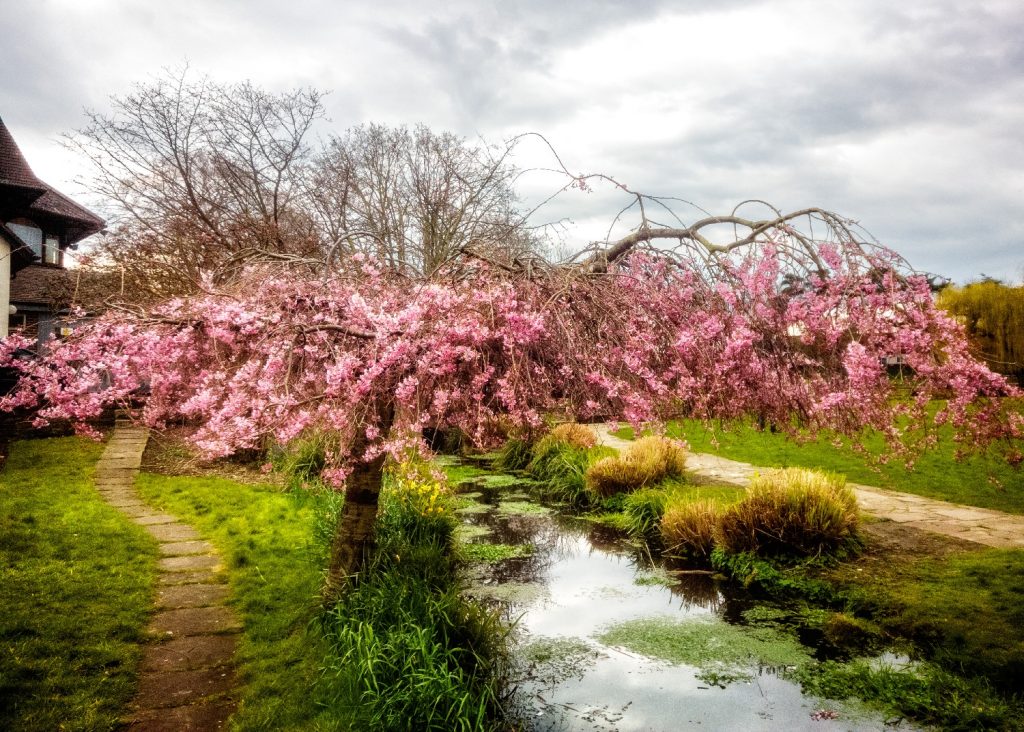
Japanese Maple
Whether grown to full height or as Bonsai, the Japanese maple is nice and easy to plant and cultivate across spring, summer and fall – but it’s towards September when you’ll see this tree produce its most spectacular colors.
The maple is famous for producing a full palette of shades and hues, with delicate oranges and reds particularly appealing. It’s easy to match a maple or two with a few complementary bushes, such as camellia and plum yew, underneath.
Unlike the cherry blossom, the Japanese maple has a deep thirst, meaning you’ll need to water it regularly. Check the soil during dry periods and be careful not to overwater. This impressive-looking tree will need a little care and attention protecting from wind and weather when first taking root, but once it’s firmly in place, your maple will typically look after itself. They’ll withstand the cold up to zone five and the heat up to zone eight.
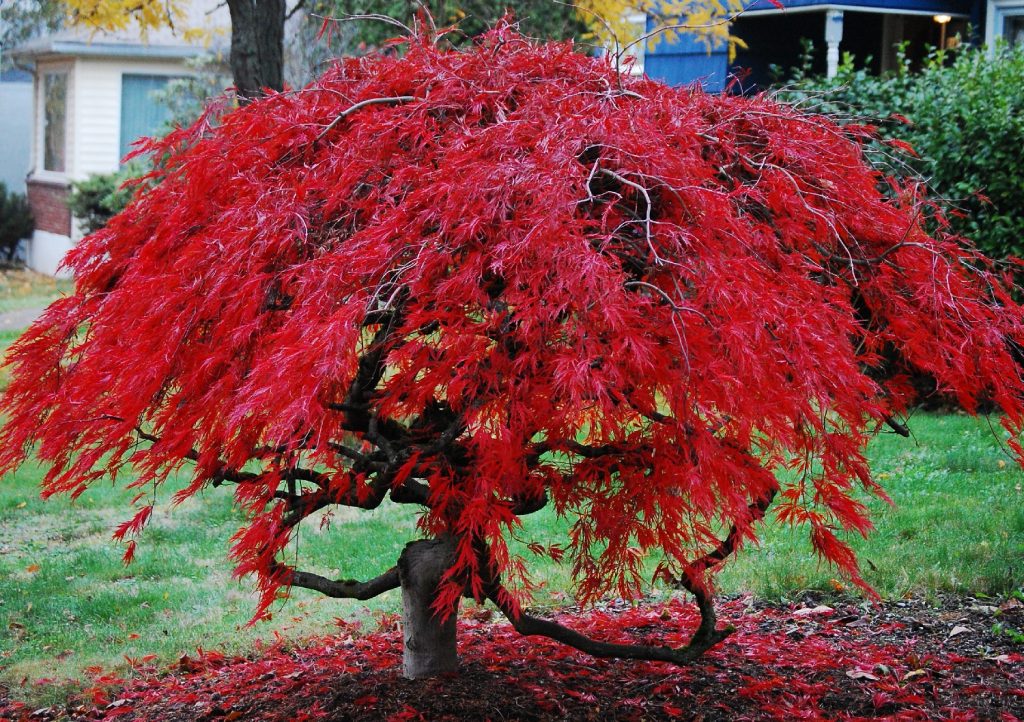
Japanese Quince
If you’re interested in growing fruit in your Japanese garden, quince trees are both gorgeous to look at and bountiful in produce. Like large Bonsai, quince trees have curious-shaped leaves and will complement blossom trees in your garden – they bloom in white and pink. They’re best planted at the start of spring where possible, and you normally won’t have to water them too frequently.
They will flower across the brighter seasons, but in the fall, you’ll get your pick of quinces, sweet and tart-tasting fruit. Allow it to ripen before the winter rolls around for the best-tasting picks.
Quince trees do best facing to the south and will grow to around half the height of a blossom, no more than 15 feet tall and wide. Keep them in full sun and well-drained.
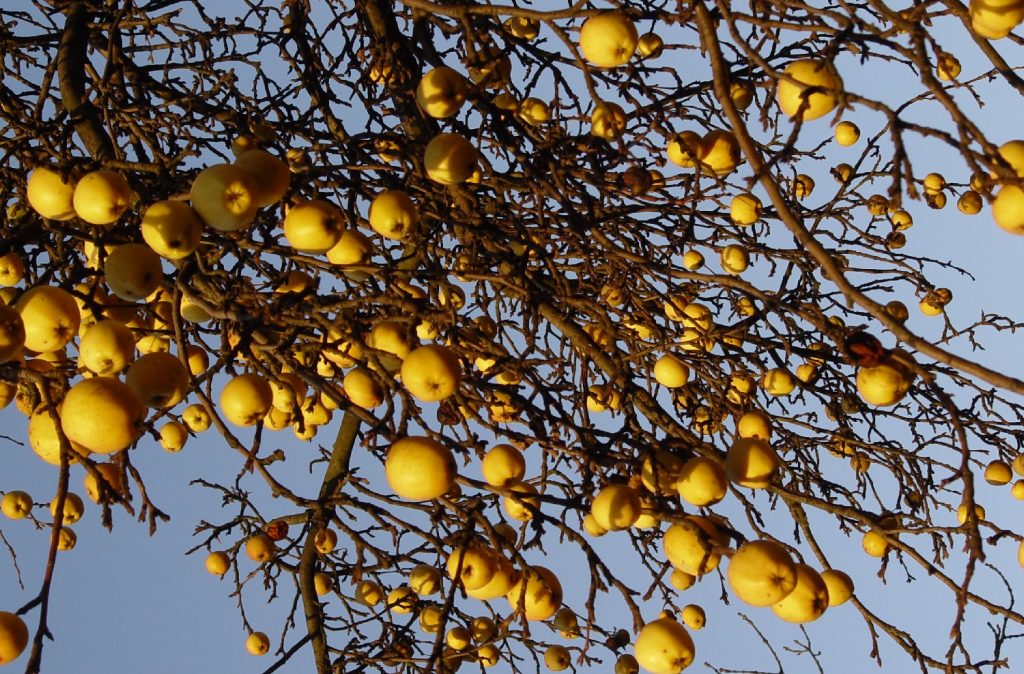
Hinoki Cypress
Many Japanese gardens revolve around the presence of elegant evergreen plants, and the Hinoki Cypress proves popular thanks to its bright foliage in green and golden tinges. This tree arrives in more varieties than most Japanese garden plants, with slender and dwarf variations available to complement the size and shape of your yard. Smaller and more slender Hinoki Cypresses are ideal for filling corners and spaces left open in your garden.
Conversely, most varieties will grow impressively tall in the wild – up to 75 feet! You’ll typically find garden varieties are no taller than 40 feet, making them the ideal stature to match alongside cherry blossoms. This tree grows fairly slowly across the year and will need full sun and moist, draining soil to thrive. It’s best grown in USDA zones five to eight.
Mid-size Hinoki Cypresses are recommended for your garden – if you don’t want any skyscrapers – include the Confucious variety. This variation is gold and bronze in color and won’t grow much taller than four feet. Alternatively, add double the height for the moisture-loving Fernspray Gold, which combines lovely splashes of yellow and green.
If you’re keen to attract bees to your garden, the Hinoki Cypress is a natural pollinator magnet!
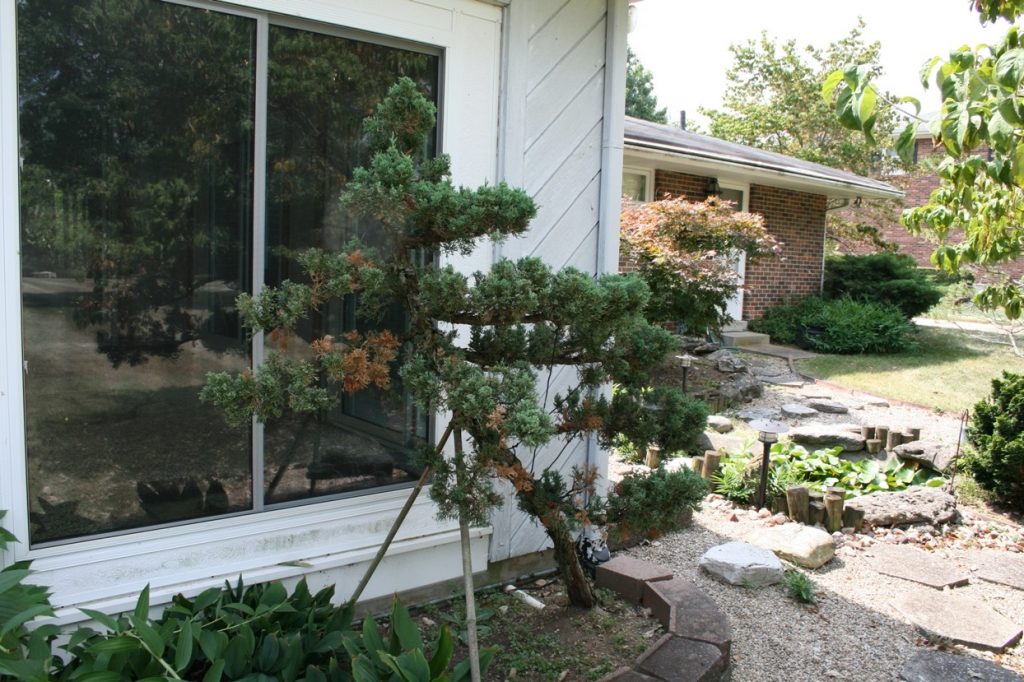
Styrax Japonicus (Japanese snowbell)
The Styrax is another Japanese native that often goes by an alternative name – the snowbell. This is thanks to its fluffy, white, bell-shaped blooms that spring in warmer months. You’ll normally find they leave your trees around the end of summer, but that’s when Styrax leaves transform into gorgeous yellow. It’s a popular choice in Japanese gardens, thanks to its changing palette from summer to fall.
Styrax trees are impressively large at full maturity, scaling almost 40 feet if allowed to thrive in draining soil – and they’re not too picky about light conditions. Be sure to scale and prune back these trees to avoid choking up too much of your garden space. Water only when dry – moisture is a killer for this tree.
Much like the Hinoki Cypress, the Styrax is one of the best Japanese garden trees for attracting bees, mainly thanks to its abundant blooming. Leaf colors on this tree will remain green and rich well into the fall, and it fares well wintering around zone six.
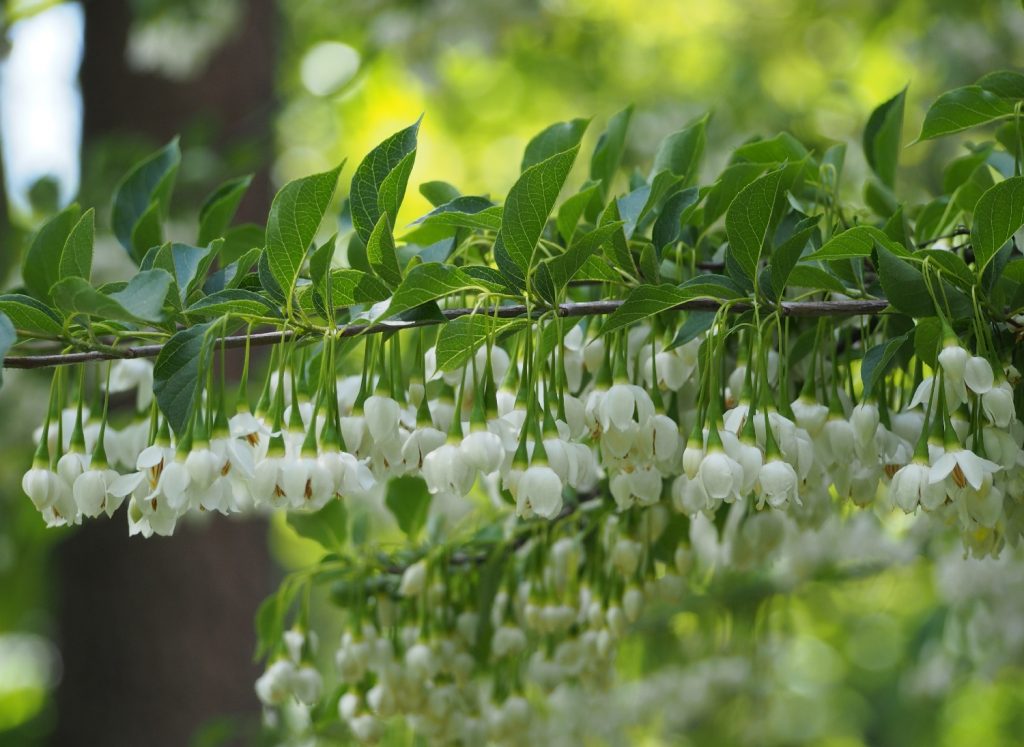
Japanese Black Pine
Despite the name, black pines are certainly evergreen trees, boasting impressive bursts of spiny, verdant needles. This tree is less ‘tidy’ than the neat shapes of cherry blossoms and Japanese maples, meaning it’s worth preparing to clean away needles at the end of the growing season. That said, leaving the needles to decay into your beds can help to make soil pH more acidic – the choice is yours. These trees grow stronger in more acidic soil, too – so you’ll be helping them come back season after season.
The Pinus thunbergii grows into a somewhat cone-like shape and tends to become more fluffy and erratic in silhouette the older it gets. It’s also not a huge fan of colder temperatures, though it’s more salt-tolerant than other trees on this list. If you live close to the coast, this is one of the hardiest trees you’ll grow in a Japanese garden – it’s highly resistant to sea spray and will grow all year round.
Black pines are some of the hardiest Japanese garden trees, but they’ll typically require more work than others. They can grow to be around 60 feet tall and 35 feet wide, and you’ll need to water them once a week (without making the soil too wet). In the wilds of Japan, black pines can even scale up to 100 feet tall!
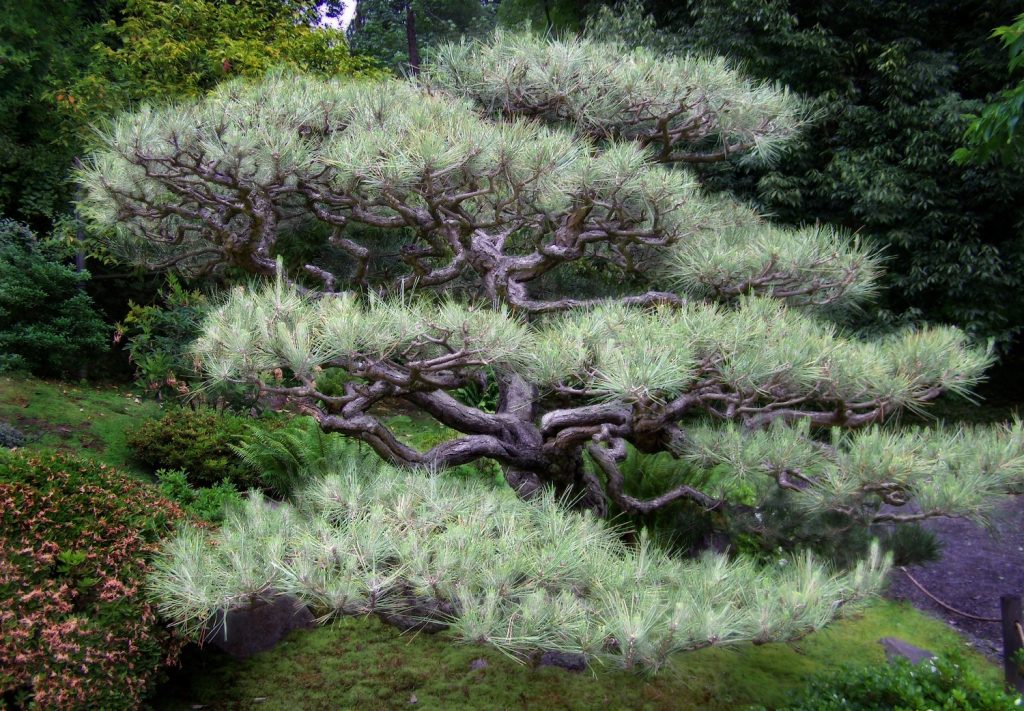
Bamboo
Bamboo is a quintessential Japanese plant that has a rightful place in both stylized gardens and humid rooms within the home. There are more than 1,400 different species of bamboo documented, and many will grow tall and sprawling with very little encouragement. As Japanese gardens are typically neat and harmonic by design, it’s important to find a species that’s easy to maintain.
Varieties such as the Nandina, sometimes referred to as sacred bamboo, add inspiring accents of gold to outdoor spaces. These trees can turn bright red across the seasons, helping to add a bold splash of color from spring to fall. They’ll typically grow to around six feet in height but, as with most species, can grow out of control if given too much space. Be sure to trim right to its base if growing too thickly.
Moon Bay bamboo, meanwhile, is very easy to keep growing at a minimum, with similar colors to the Nandina.
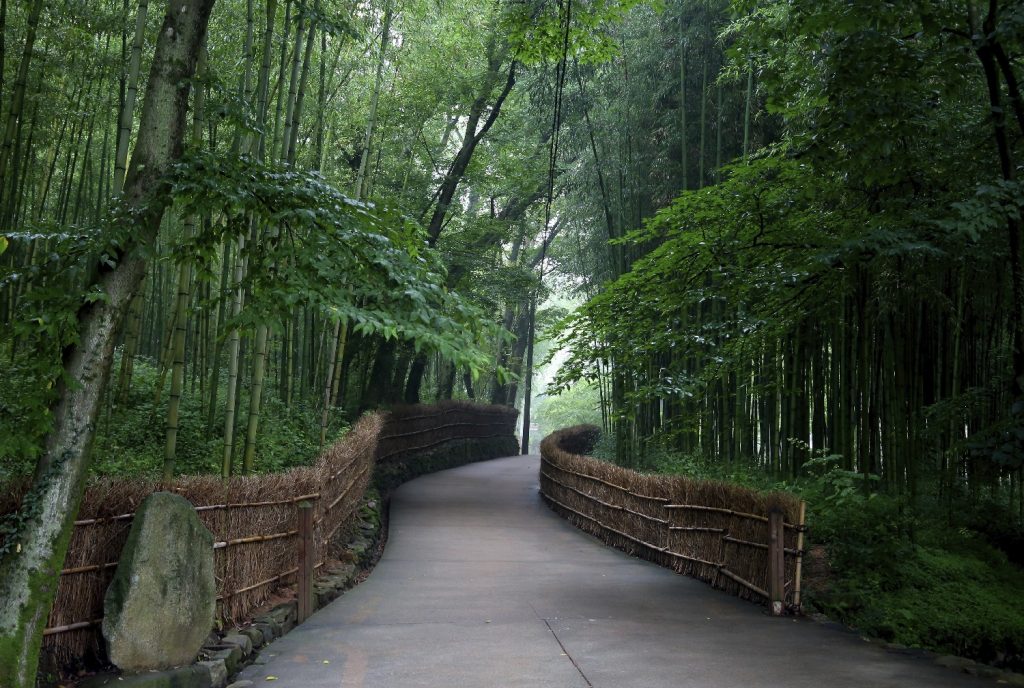
Japanese Plum Yew
The plum yew is typically grown as a bush or shrub, but it’s frequently found as a smaller companion to taller trees in many Japanese gardens. The Cephalotaxus is a shade-lover and provides a classic, evergreen shape and color typical of many Japanese yard styles. It’s well-loved as a rock garden shrub, too.
Its dark green leaves point out like needles and can produce fruit. You’ll need to ensure you have male and female variations of the plant for this pollination to occur! Try to plant one male for every five females for the best harvest – the fruit is edible and sweet with it.
This yew needs little encouragement to grow and will spread its plumage far and wide – even in the sun. Make sure to clip yours into round, compact shapes to neatly complement taller growths (such as a cherry blossom). They enjoy soil that drains well and won’t need watering more than once a week unless things heat up. Always fertilize before spring, too.
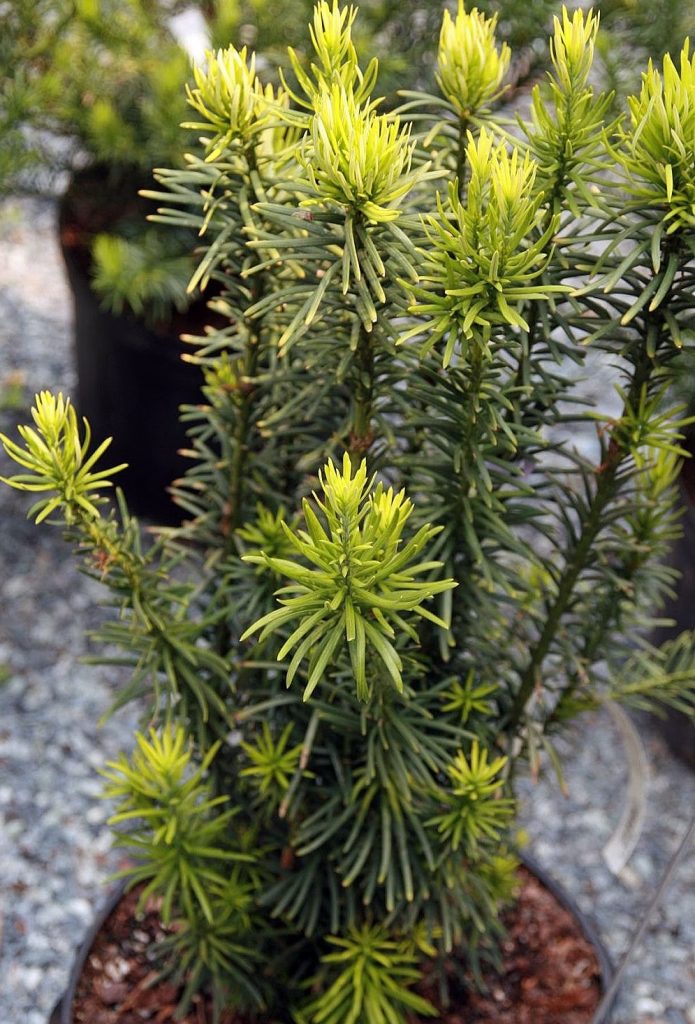
Camellia
The camellia is another staple denizen of many Japanese gardens, thanks to its elegant appearance and its delightful white flowers. Camellia is an excellent choice for helping to fill and support gardens with tall trees and shrubs growing in the full sun. These plants are easy to grow, though they will take some time to flower and mature. When they do, you can even create natural screens and train them to scale fences.
The Camellia japonica has the potential to grow up to 12 feet tall and up to ten feet wide, great for growing beneath black pines or Japanese maples in complementary colors. Interestingly, this evergreen will flower across most seasons, and you won’t need to worry too much about giving them full sunlight. This is a plant that will thrive well across zones seven to nine.
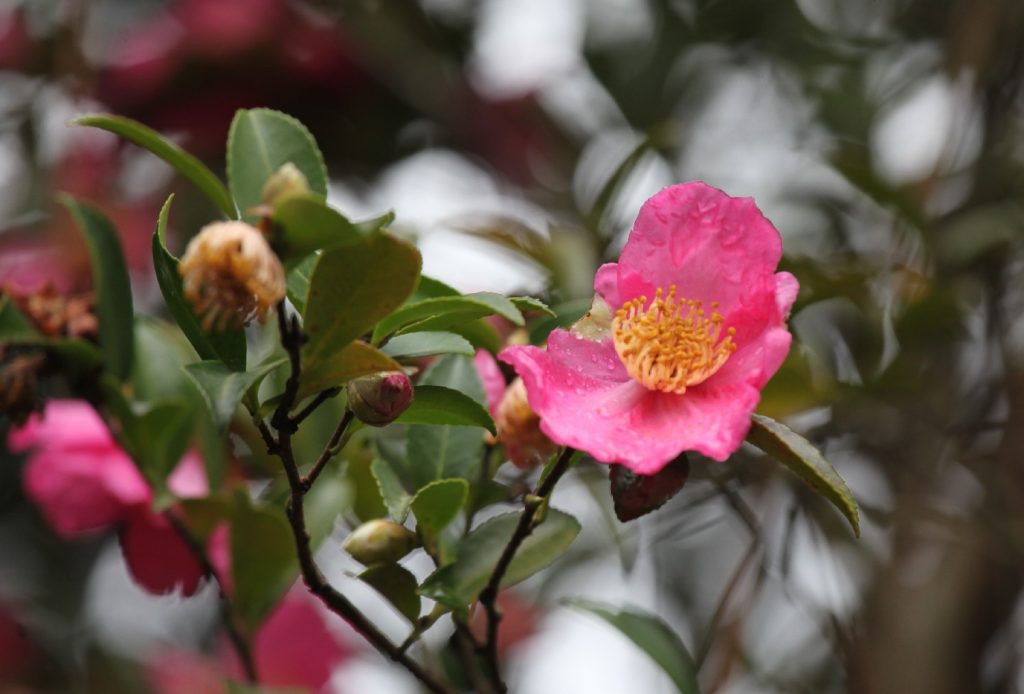
What are the typical elements of a Japanese garden?
First and foremost, Japanese gardens revolve around the concept of harmony. These are delicate, fairly modest outdoor spaces, with trees and shrubs trimmed and shaped to compliment the zen area. The best trees and shrubs for Japanese gardens typically won’t compete for nutrients and are often low-maintenance at watering and feeding level. Trimming and pruning your plants, on the other hand, is a more delicate art.
Above all else, looking for plants and trees that grow natively in Japan is important. Thankfully, all those listed above do – and will thrive in the US.
While many of us think of cherry blossoms and blooms bursting in pink and white when Japanese-style gardens come to mind, the main aesthetic is rooted in greenery. Specifically, you’ll find that many Japanese gardens prioritize growing evergreens, which stay verdant all year round. A handful of recommended trees in the list above turn gold or yellow when fall arrives, but it’s easy to complement these with evergreen plants.
It’s not unheard of to add flowers to a Japanese garden – letting camellia bloom open adds an authentic touch, for example. It may also be worth growing azaleas for a delicate display (and to welcome bees, butterflies, and hummingbirds, too).
Ultimately, a ‘typical’ Japanese garden is one that’s carefully composed and dedicated to nature. You may wish to add more than trees and plants to capture this sense of natural harmony – for example, why not consider rocks, gravel, flowing water, patches of moss, and small ponds, too?
Popular architecture in Japanese gardens includes teahouses, bridges, stone lanterns, and bamboo structures. Used sparingly, nestling these features among a well-maintained series of trees and other plants can help make your garden look more authentic.
Why grow a Japanese garden?
Japanese garden designs can be deeply calming to look at and rest out in – and great for attracting all kinds of pollinators. Maintaining this style of garden space can take time and a keen eye for shape and symmetry, but it’s highly rewarding if you intend to use your yard as a space for relaxing and meditating.
The trees for Japanese gardens listed here are only a few specimens that help to recreate undeniable eastern charm. Why not look for other plants and trees native to Japan, and start planning to transform your current garden setup?
